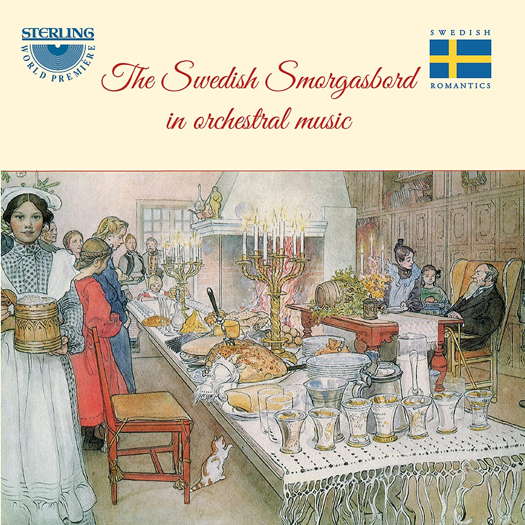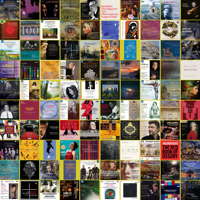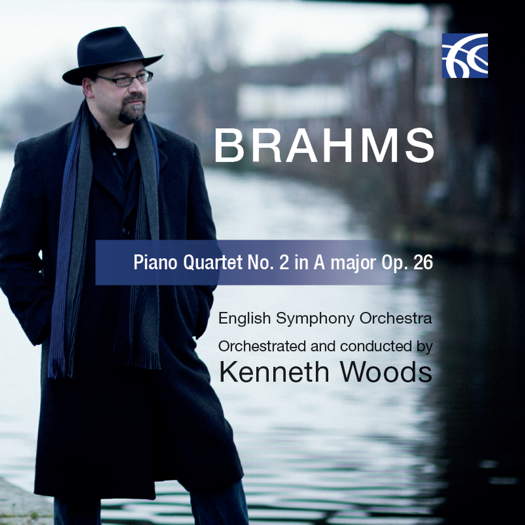- Johann Baptist Vaňhal
- Eastbourne
- Berg
- Vernon Handley
- La Mer
- Oliver Rudland
- Col Legno Music
- Ann Murray

Another Path to Modernism
JOHN DANTE PREVEDINI listens to an anthology of Swedish orchestral music
'... an enduring melodicism and a surface character of lightness and sentimentality ...'
Sterling Records' recent release, The Swedish Smorgasbord in Orchestral Music, is a two-disk anthology of orchestral music by various Swedish composers spanning from the eighteenth to the twentieth centuries. The ensembles featured include the Norrköping Symphony Orchestra, the Royal Stockholm Philharmonic Orchestra, the Gävle Symphony Orchestra, the Västerås Symphony Orchestra and Gävleborgs Orkesterförening; the various conductors include Sten Frykberg, Björn Hallman, Göran W Nilson, Harry Damgaard and Gunnar Staern. The anthology consists of previously-released recordings made between 1955 and 1981 and includes a bilingual booklet in English and Swedish, written in a style that is scholarly yet accessible and thus appropriate for specialists and general readers alike. The booklet is quite substantial, containing composer biographies and portraits, program notes, musical texts with translations and an introductory preface from the label's executive producer recounting the circumstances surrounding the creation of this anthology, apparently the first of its kind on record.
How fortunate it is that such an effort was made, because this anthology is an invitation for the rest of the Western world to re-examine its standard canon and address the relative absence of these Swedish masters, including their unique solutions in the universal saga of achieving modernization within tradition. Indeed, it is rare to see music schools and performance venues (at least in my country, the United States) programming Swedish composers, though they frequently showcase representative figures of other Northern European cultures like Grieg, Nielsen and Sibelius. If the composers on this Swedish anthology were curated alongside the likes of Messiaen, Webern or Bartók for the ears of today's budding generation of would-be composers, I suspect it would equip those listeners with a noticeably more nuanced roadmap for the kinds of innovations that are possible in classical music traditions facing a changing landscape.
What does this alternate path to modernization look like? The two common threads of continuity I see throughout the two-century body of work represented here are an enduring melodicism and a surface character of lightness and sentimentality that nonetheless leave much room underneath for emotional complexity and technical experimentation. The pieces on this anthology are too numerous to illustratively include here in full, but I think a few key examples will suffice.
We begin circa 1740 with the three-movement Sinfonia in F major by Johan Agrell, who fuses the emerging preclassical style and proto-symphonic structure with melodic shaping and ornamentation reminiscent of Swedish folk music.
Listen — Johan Agrell: Sinfonia in F
(CD1 track 1, 0:13-0:43) ℗ 2021 Sterling Records :
Later, we encounter a setting of the poem Florez och Blanzeflor (1898) by Wilhelm Peterson-Berger, a work which presents a deceptively simple vocal melody underscored by a protean orchestral voice which undulates between Brahmsian diatonicism and Wagnerian chromaticism.
Listen — Wilhelm Peterson-Berger: Florez och Blanzeflor
(CD1 track 6, 1:30-2:00) ℗ 2021 Sterling Records :
Toward the end of the second disk, we arrive at the Preludio e Finale (1955) for string orchestra by the brilliant and too-shortly-lived Bo Linde. Here, a surface character of melodicism and superficial diatonicism provides the canopy for a harmonic and coloristic underbelly that blends the resonant, the earthy, the percussive and the bitingly atonal.
Listen — Bo Linde: Prelude (Preludio e Finale)
(CD2 track 10, 3:14-3:44) ℗ 2021 Sterling Records :
Numerous examples of similar phenomena can be seen throughout the anthology, showcasing the works of many more composers beyond the few I have just mentioned.
Classical music traditions have always had to meet the challenge of responding to a changing world, and the twenty-first century has so far proven no exception. How a tradition should modernize in order to survive - or whether we should even allow a tradition to survive at all - are questions that confront our field at every corner. Our knowledge of the past informs the possibilities we imagine in the present, and the examples curated and taught to us as ‘history' often shape our perceptions of what can analogously be done in response to the landscape we inhabit today. The Swedish Smorgasbord in Orchestral Music shows us a glimpse of a chapter which for many of us is missing from that history book: the rare story of a culture whose path to modernism succeeded without ever needing to sever the foundations of melodicism, sentimentality and lightness of character. Music students today often come away from their educations knowing that they can stand on the shoulders of Messiaen, Webern or Bartók. Perhaps, one day, those students will benefit from knowing that they can also stand on the shoulders of Agrell, Peterson-Berger or Linde.
Copyright © 22 July 2021
John Dante Prevedini,
Connecticut, USA

CD INFORMATION: THE SWEDISH SMORGASBORD IN ORCHESTRAL MUSIC
MORE CLASSICAL MUSIC ARTICLES ABOUT SWEDEN
RECENT CLASSICAL MUSIC CD REVIEWS




